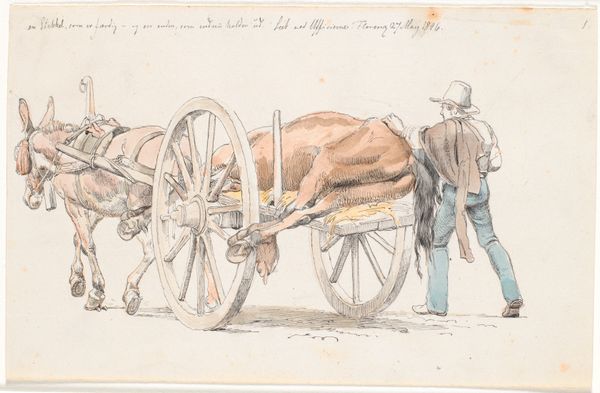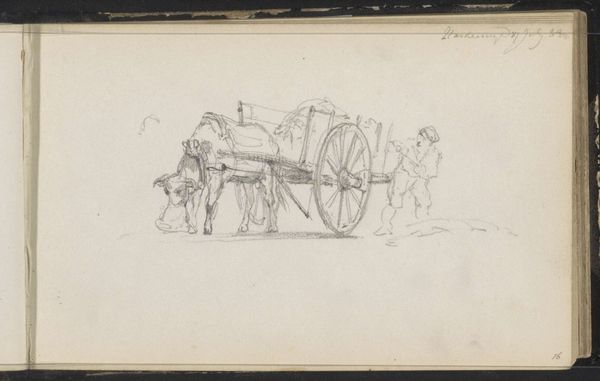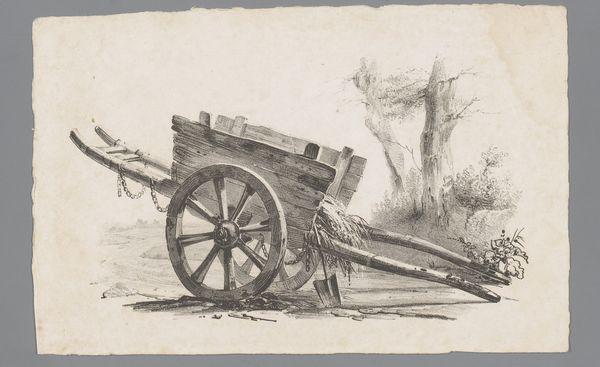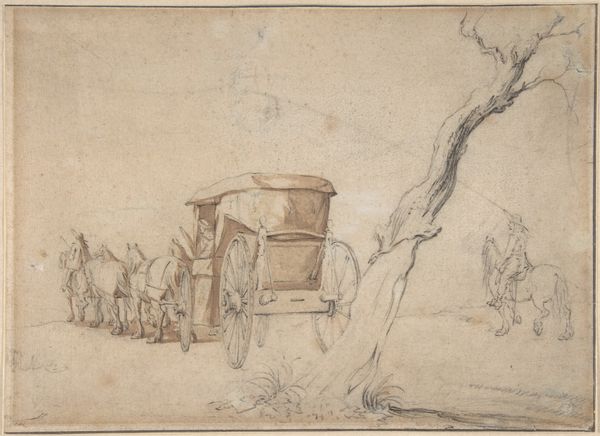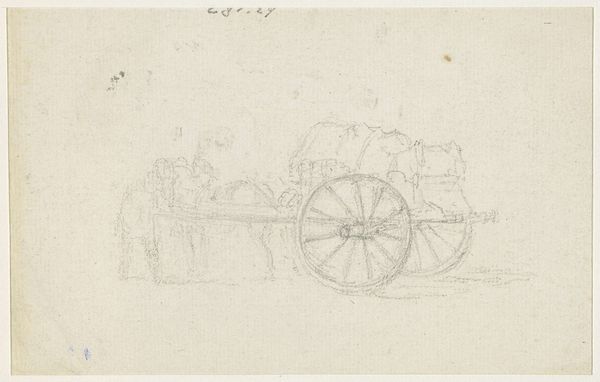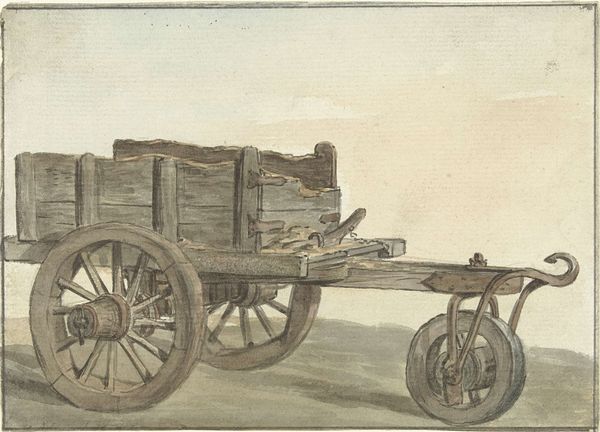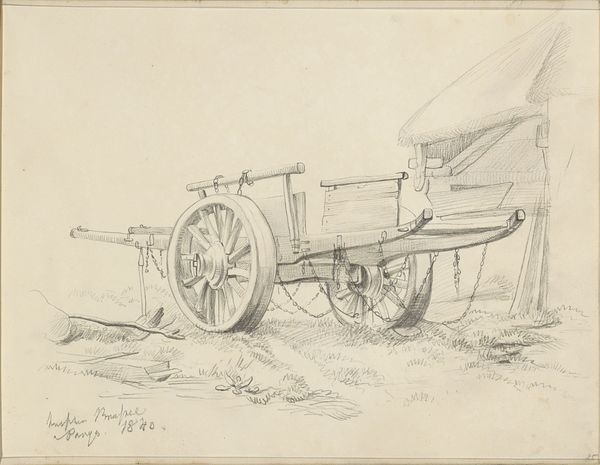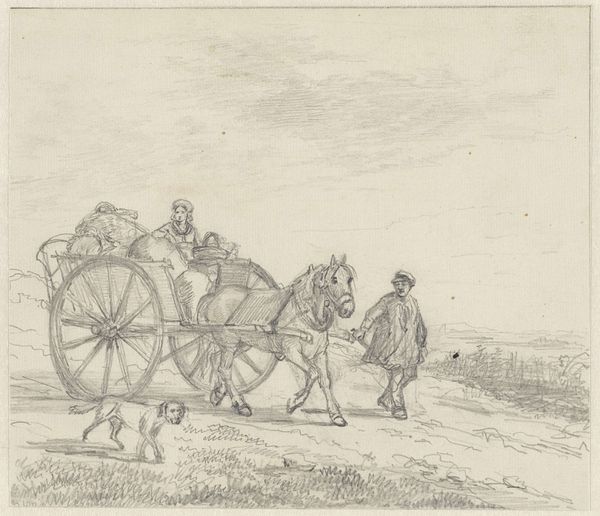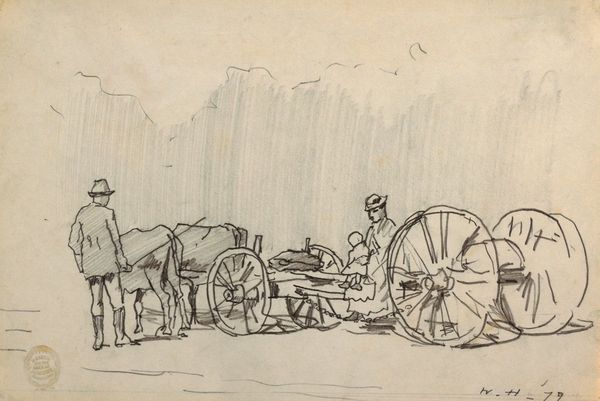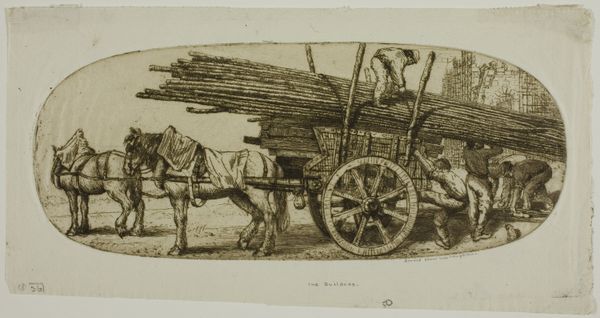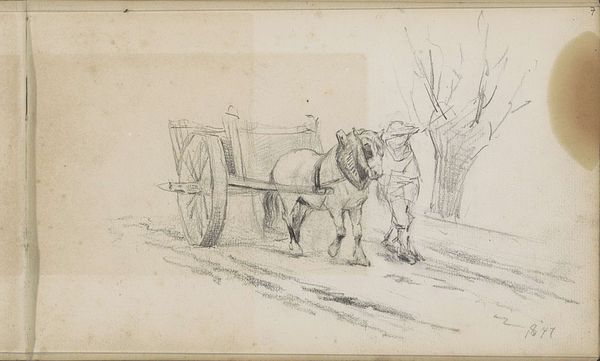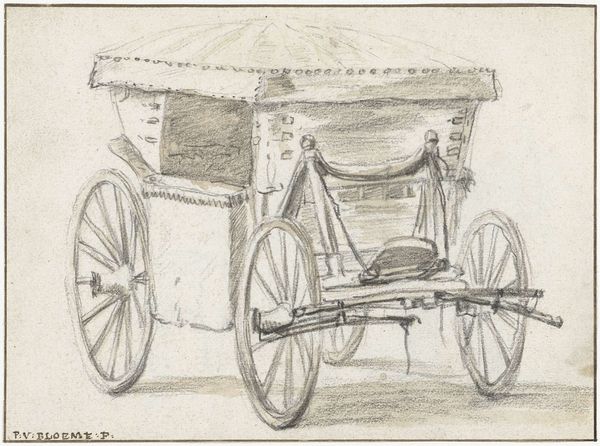
drawing, pencil
#
drawing
#
baroque
#
landscape
#
pencil
#
genre-painting
Copyright: Public Domain: Artvee
Curator: There's a raw, honest energy to this drawing, wouldn't you agree? It's almost primal. Editor: Definitely, that visceral feeling grabs you right away. What are we looking at exactly? Curator: This is Peter Paul Rubens' drawing "A Man Threshing Beside a Wagon, Farm Buildings Behind," dating back to around 1615-1617. Done in pencil, it's a glimpse into rural life, rendered with such freedom of movement. Editor: It's interesting that you describe it that way, "raw and honest". The art of Rubens—particularly drawings like these—can't be extracted from an understanding of feudal economies and class division. Curator: Oh? Unpack that a little bit for me. Editor: Sure. This image, seemingly simple, actually puts front and centre the figure of rural labor at a moment of significant class transition across Europe. We can analyse it, for example, through the critical lenses of thinkers like Federici and examine its broader meaning. Curator: That adds a lot more weight to the solitary figure and his work. Suddenly it's less idyllic and more about the realities of labor, isn't it? It does feel like that, a contrast between this human form and this massive wheel. You also notice, I think, that most lines meet in the wheel and how it almost rotates you through the entire piece. What do you think Rubens tried to convey here? Editor: It's a document. By situating it within a wider conversation around feudalism, the drawing offers a silent but striking socio-political statement about work in general. Curator: And perhaps, if we stretch it, a meditation on cycles – the agricultural cycle, the social cycles. You can feel the earthiness. I find that amazing in something sketched in pencil almost four centuries ago. It resonates today. It certainly is some sort of message in a bottle sent across the ages. Editor: I agree, the genius here is undeniable. But our modern interpretations change based on where we stand today, and how it interacts with this history of the world. It is open, raw, unburdened from that perspective. Curator: Precisely. That conversation never truly ends, does it? Thanks to Rubens's genius. Editor: Thanks for your amazing analysis and context! It was great chatting with you.
Comments
No comments
Be the first to comment and join the conversation on the ultimate creative platform.
